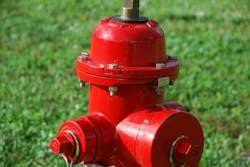Recalled Fire Hydrants Remain Untouched
Nearly half of the 43 major hydrant recalls since 1999—affecting hundreds of thousands of hydrants—have never been inspected or repaired. The primary cause is that municipalities nationwide often do not know specifically where the faulty hydrants are located.
Most of the recalls involve internal hydrant issues, which make them hard or impossible to operate over time. This can force fire fighters to seek alternate water sources during a blaze, which adds time and could make the difference between beating a fire or losing to it.
Limited data from hydrant manufacturers indicates recall programs are approximately 60% effective. The heart of the issue is municipal hydrant asset databases: What fire fighting devices does a city have in its inventory, and where are they physically located?
"During the past 25 years, many cities have made it a high priority to catalog and plot important key municipal features using GIS (geographic information system) mapping. Fire hydrants are just one of these key GIS asset features," said Mark Voigtsberger, president of UT/GIS. "The problem is, many cities failed to collect certain fundamental information about the hydrants such as manufacturer, model and year cast—all crucial information needed to identify specific units falling under these 43 recall notices."
Cities can often produce an electronic GIS map showing the locations of all their hydrants, and the global positioning system (GPS) latitude and longitude values are generally accurate and correct. However, many cannot extract from that data set specific hydrant makes and models.
Voigtsberger points to one large municipality with close to 60,000 hydrants: "This city collected over 100 features on each individual fire hydrant, but none of it useful in pinpointing recalled units. 15 data fields alone were dedicated to tax and political divisions within the city. Many other fields were simply administrative information. This city will be required to physically visit each of the 60,000 locations to determine if, and how many, of their hydrants fall or have fallen under a recall. They may have none, but they could have thousands. Gathering the correct GIS data initially could have prevented these needed re-visits."
Many other cities will have to do the same and visit each location to ensure 100% of their recalled fire hydrants have been inspected and remediated.
It should be noted all hydrant manufacturers do an excellent job with their product recalls, providing repair parts for free and enough money to offset the calculated labor costs needed to make the fixes. However, they cannot tell where their products are located in a city.
Source: PR Newswire Assn. LLC
